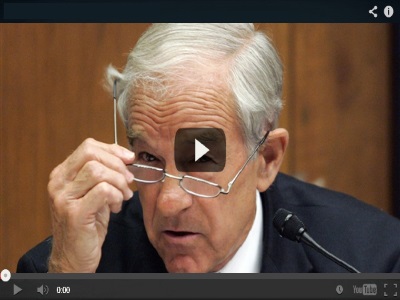by Amy S.

When the U.S. government shuts down, federal agencies lose access to the funding they need to perform different functions. This affects people across the country. National parks and museums close. Many folks with public sector jobs can’t get paid and the economy takes a hit. While federal furloughs rarely happen, it doesn’t hurt to be prepared. Here’s what to do the next time you hear about a possible shutdown.
On the verge of owning the longest government shutdown on record, President Trump said Thursday he’d “almost definitely declare” a national emergency to commission the military to build a southern border wall if Democrats don’t bend to his will and approve the funding.
Though American presidents enjoy broad authority to declare national emergencies, using one to get around a partisan legislative dispute would paddle Trump out into murky legal waters, legal scholars told VICE News. Doing so would launch a flurry of legal challenges from Congress and other groups likely to end in the Supreme Court. There, Trump’s lawyers would have to convince the high court that the situation on the border truly is a national security emergency — and that his proposed response is within the boundaries of law.
If a shutdown does occur, here are some likely outcomes:
Possible stop work orders: During the FY13 shutdown, some agencies issued stop work orders for field research programs (for example, the US Fish and Wildlife Service). This impacted the pay for some graduate students and staff, but departments were able to temporarily cover those costs.
Proposal submittals: Generally speaking, ORE would likely continue to process proposals. We expect that grants.gov would be maintained by the agencies so that proposals can be submitted to be held in queue and processed after the shutdown ends as in FY13. Other agencies that use web-based portals (for example, the National Science Foundation) may shut down their websites entirely, meaning no proposals could be submitted to those agencies.
New awards: New awards are likely to be delayed until after the shutdown is over. Please be very cautious about spending funds before an award document is received. All expenditures must occur in the period of performance.
Routine administration of grants and contracts by the agencies: It is expected that requests for rebudgeting, no cost extensions, award continuations, and other action decisions would be significantly slowed down.
Access to federal facilities: It is also likely that federal facilities may not be available during a shutdown. Faculty should inquire directly with those facilities.
Availability of funds: Most agencies would likely continue to allow automatic drawdowns. We do not anticipate any changes in fund availability as long as the shutdown is minimal.
DEFINING CRISIS
As the shutdown grinds on, Trump and his team have tried to bolster their case that security on the southern border is in crisis, often relying on misleading claims that go against readily available evidence. On numerous occasions, Trump and his team have evoked the specter of terrorists sneaking through the southern border to support their concerns that a national crisis is afoot. In a recent tweetstorm, Homeland Security Secretary Kirstjen Nielsen warned that “the threat was real.”
Trump doesn’t necessarily need to rally his base, however. He would have no trouble at the outset in simply declaring a national emergency, legal experts said. The Brennan Center has identified over 100 statutory powers at the president’s disposal once he’s declared a national emergency. Two powers in particular, which would grant him authority over military and construction projects, have been floated as possible avenues for him to pursue, according to Goitein.
But the exact language used to justify that decision would immediately be pounced upon and challenged — requiring him to back up his rationale for doing so in court.
“I don’t think either of these laws is a perfect fit, and I think they would both be quite vulnerable to legal challenge,” she said.
Trump himself had already declared a national emergency on three separate occasions. Those instances involved sanctioning human rights abusers abroad, sanctioning hackers and social media trolls over election interference, and responding to Nicaragua’s “use of indiscriminate violence and repressive tactics against civilians.”
Former President Barack Obama did so 13 times, including once in response to the H1N1 swine flu pandemic. George W. Bush did it 12 times, including calling one to give himself extensive new powers after the terror attacks of September 11, 2001. Bush’s post-9/11 actions have played a key role in expanding the powers of the presidency, especially when it comes to America’s wars abroad.
President Franklin D. Roosevelt infamously used emergency powers to orchestrate the internment of over 100,000 Japanese-Americans during World War II.
Yet as sweeping as they are, the president’s emergency powers are no sure thing, and the historical example most comparable to Trump’s possible pathway doesn’t paint an optimistic outlook.
A similarly frustrated President Harry Truman attempted to go around congressional gridlock and nationalize American steel assets in response to a labor strike during the Korean War. But the Supreme Court didn’t find his argument for emergency powers convincing, and struck down the executive order.
Democrat Adam Schiff, chairman of the House intelligence committee, warned Trump would face a similar fate.
